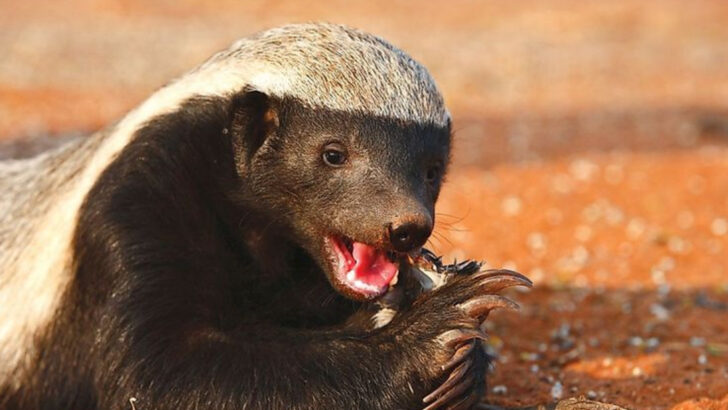Honey badgers aren’t fearless—they’re brilliant.
While lions roar and leopards stalk, the honey badger is out here cracking puzzles, raiding dens, and turning predators into punchlines. It doesn’t just survive the savanna—it outwits it.
You think size matters? Think again.
This scrappy little powerhouse has figured out how to escape cages, fake weakness, and use teamwork like a furry criminal mastermind. Crocodile-infested waters? Please. Snake venom? Temporary inconvenience. Even hyenas have learned to keep their distance.
Predators see prey. The honey badger sees opportunity.
And once you understand what’s really going on in that sharp little brain, you’ll never look at this creature the same way again.
Tool-Wielding Prowess
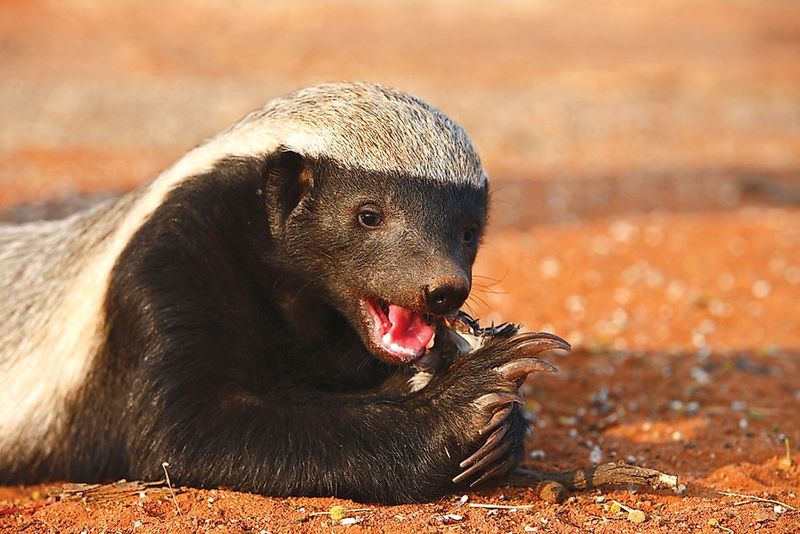
Cleverly wielding sticks, honey badgers astound observers with their ability to use tools. This remarkable skill is not only a testament to their intelligence but also a survival mechanism. In the wild, they adeptly manipulate objects to dig or extract food.
Using tools gives them an edge over other animals, allowing them to access resources others can’t. Whether prying open a difficult shell or breaking into a beehive, their inventive nature shines through. This capability underscores the honey badger’s reputation as one of nature’s most resourceful creatures.
Fearless Attitude

With fearless attitudes, honey badgers confront predators much larger than themselves. Their boldness deters even the most ferocious adversaries, such as lions and hyenas. Known not to back down easily, they embody courage.
This audacity, combined with their tenacity, makes them a force to be reckoned with. Not just simple bravado, this behavior is crucial for survival, enabling them to defend territory or protect young ones. Their reputation precedes them, causing many predators to think twice before engaging in conflict.
Thick Skin Defense

Possessing thick, tough skin, honey badgers have a natural armor that provides significant protection. This feature is particularly advantageous when confronting venomous snakes or avoiding predator bites.
Their skin allows them to twist and turn even when held, providing flexibility and extra defense in combat. It’s not just about protection; it contributes to their overall resilience. This unique adaptation is a key component of their survival in harsh environments where danger lurks.
Strategic Retreats
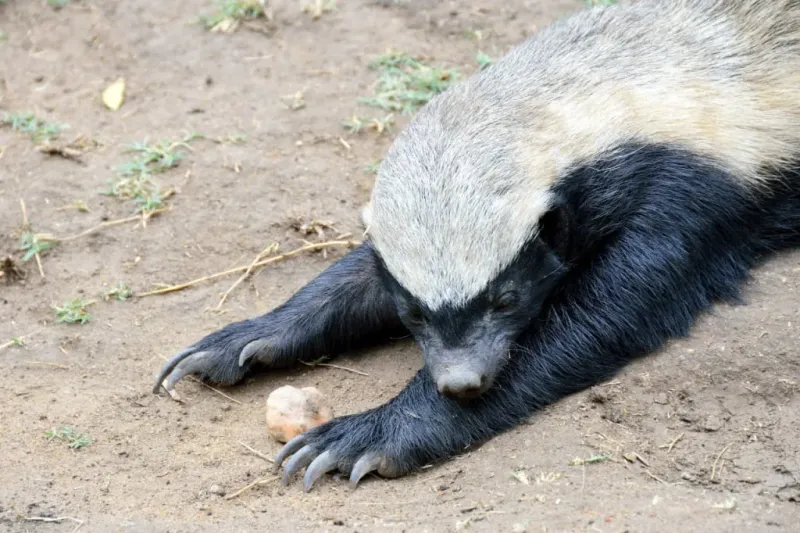
Strategic retreats are a hallmark of the honey badger’s cunning nature. Rather than confrontations that are unwinnable, they opt for tactical withdrawals. This decision-making ability highlights their intelligence and survival skills.
By assessing threats and reacting accordingly, they conserve energy and avoid unnecessary risks. This behavior is a blend of courage and wisdom, showcasing their ability to prioritize long-term safety over immediate gain. It’s a survival strategy that even seasoned predators respect.
Nocturnal Adaptations
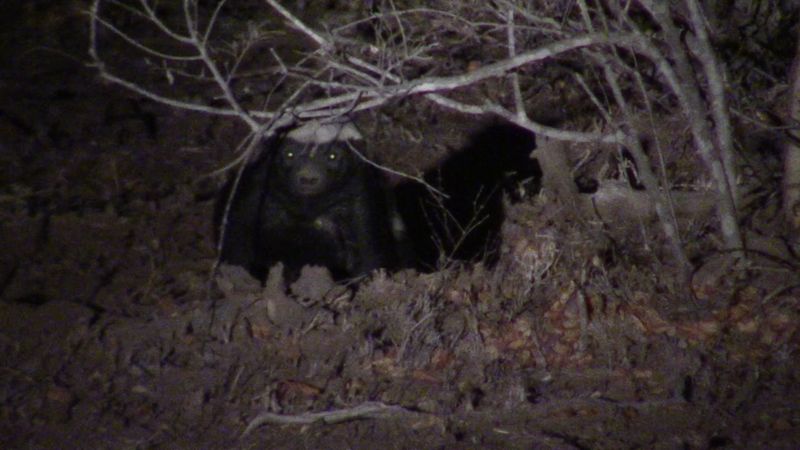
Equipped with nocturnal adaptations, honey badgers are effective nighttime hunters. Their nocturnal lifestyle allows them to evade daytime predators while capitalizing on less competition for food.
With acute senses adapted for night vision and scent detection, they navigate the dark with ease. This strategic advantage enables them to hunt and forage effectively under the cover of darkness, reducing encounters with dangerous predators. Their night-time prowess is just one more example of their adaptability and resourcefulness.
Complex Problem Solving

In the wild, honey badgers are known for their complex problem-solving abilities. Whether unlocking enclosures or outsmarting traps set by humans, their intelligence is evident.
They approach challenges with a methodical mindset, analyzing situations and devising solutions. This cognitive ability is rare among non-primate species, setting them apart in the animal kingdom. Their problem-solving prowess not only aids in foraging but also ensures their survival under challenging circumstances.
Scavenging Skills
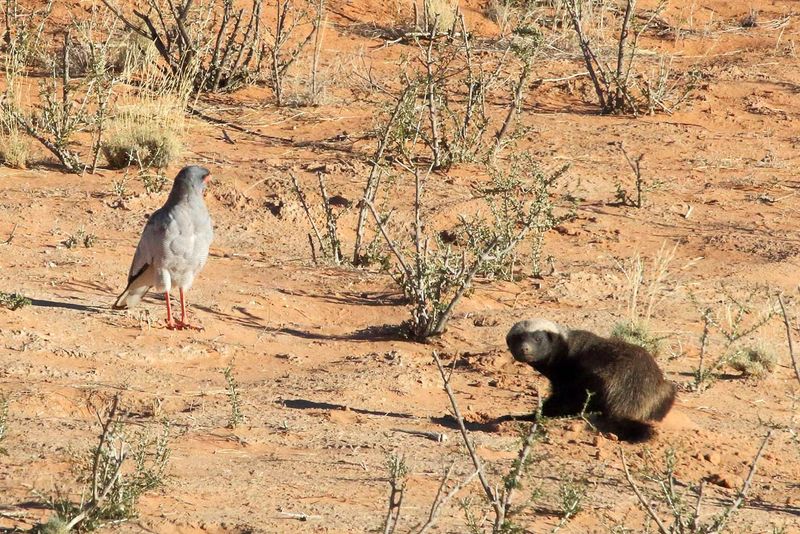
Scavenging is an essential skill in the honey badger’s survival toolkit. They adeptly exploit opportunities, capitalizing on leftovers from larger predators. This opportunistic feeding behavior ensures they rarely go hungry.
By scavenging effectively, they avoid direct confrontation with larger animals, reducing the risk of injury. Their ability to adapt their diet to available resources is a testament to their resourcefulness and intelligence. In the competitive landscape of the African wild, their scavenging skills are a vital asset.
Chemical Warfare
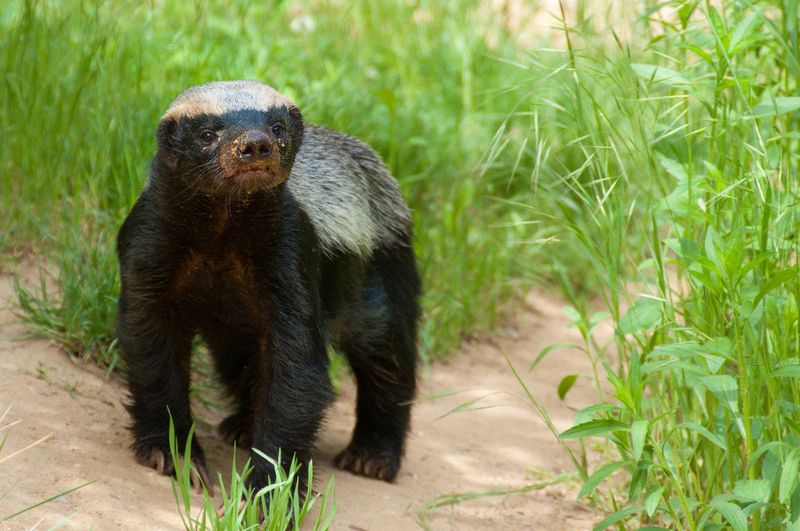
Utilizing chemical warfare, honey badgers deploy a potent scent from their anal glands to deter predators. This defense mechanism is highly effective, reminiscent of a skunk’s spray.
The foul-smelling secretion distracts and disorients attackers, allowing the honey badger to escape. This clever use of chemical defenses showcases their ability to turn the tables on potential threats. It’s a perfect example of how they leverage unique biological traits to survive.
Keen Sense of Smell

With an exceptional sense of smell, honey badgers are adept at locating prey and food sources. This keen olfactory ability is crucial for their hunting success, allowing them to detect food underground or hidden in dense brush.
Their sense of smell is so acute that it compensates for their relatively poor eyesight. This adaptation is vital for survival, as it enables them to thrive in diverse environments. Their prowess in scent detection is unmatched, often leading them to hidden treasures others might overlook.
Versatile Diet

Possessing a versatile diet, honey badgers consume a wide range of foods, from insects to small mammals and even venomous snakes. This dietary flexibility is a key survival strategy, allowing them to thrive in varied habitats.
Their ability to eat diverse foods reduces dependence on specific resources, ensuring they can find nourishment in challenging environments. This adaptability in diet showcases their resilience and enhances their ability to outwit predators by being less predictable.
Burrowing Expertise

Master burrowers, honey badgers use their powerful claws to dig rapidly into the ground. Their burrowing expertise provides shelter and a means to escape predators.
These underground sanctuaries are essential for avoiding the harsh African sun and hiding from threats. Burrowing is more than just digging; it’s a strategic skill that enhances their survival. Their keen ability to create and utilize these shelters demonstrates their ingenuity and adaptability in the wild.
Resilience to Venom
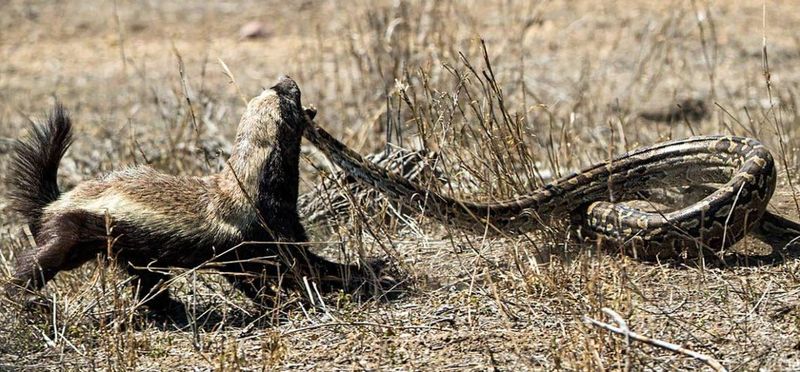
Remarkably resilient to venom, honey badgers can withstand bites from some of Africa’s deadliest snakes. This resistance allows them to prey on venomous snakes with minimal risk.
Their ability to survive venomous encounters is due to a mutation in their acetylcholine receptor, which makes them less susceptible to snake venom’s effects. This genetic trait serves as a formidable advantage, allowing them to exploit a niche few other animals can. Their unique resilience is a testament to their evolutionary success.
Cooperative Hunting
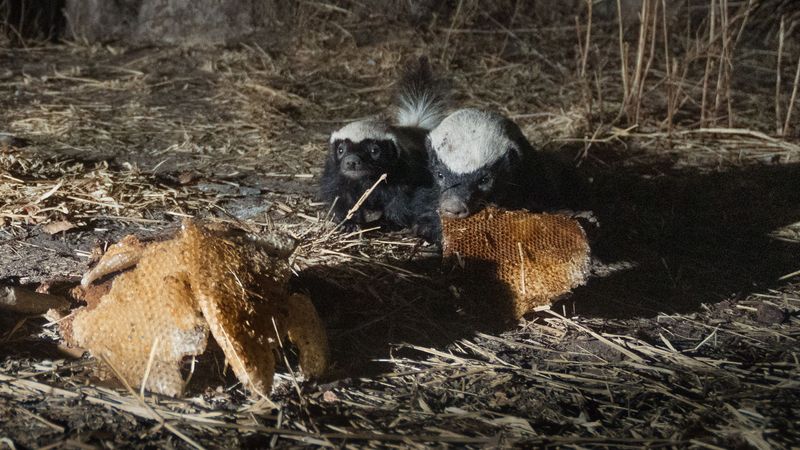
In a fascinating display of cooperation, honey badgers often team up with honey guide birds to locate beehives. The birds lead the way, and in return for their guidance, the honey badgers break open the hives, sharing the spoils.
This symbiotic relationship showcases the honey badger’s ability to collaborate with other species for mutual benefit. Their willingness to engage in cooperative hunting further highlights their intelligence and adaptability. This unique partnership in the animal kingdom is a brilliant example of nature’s collaborative strategies.

